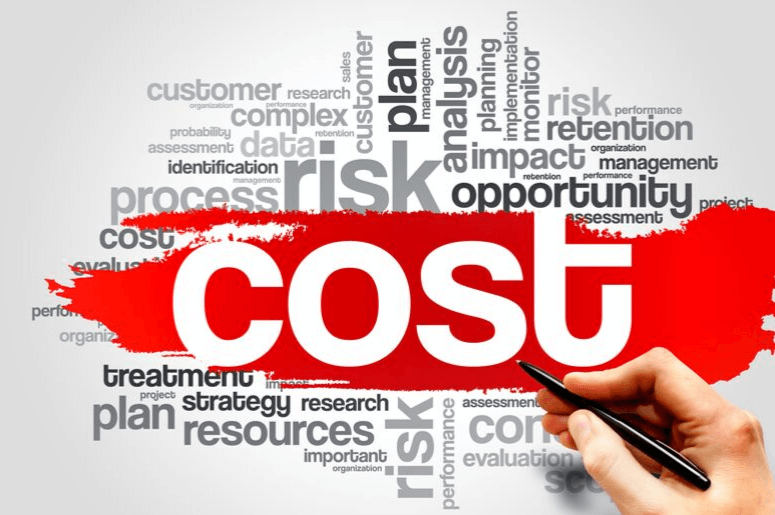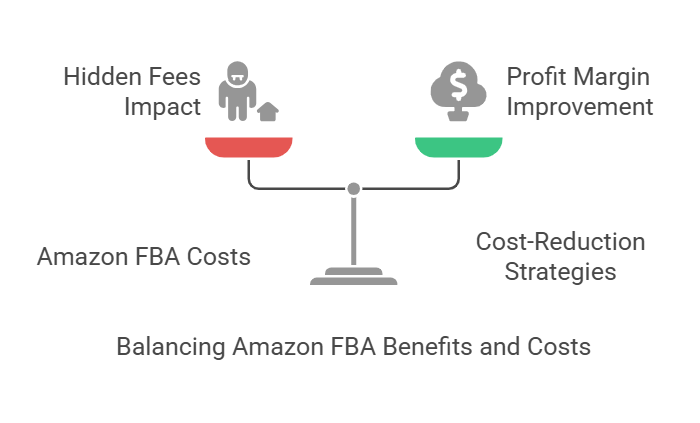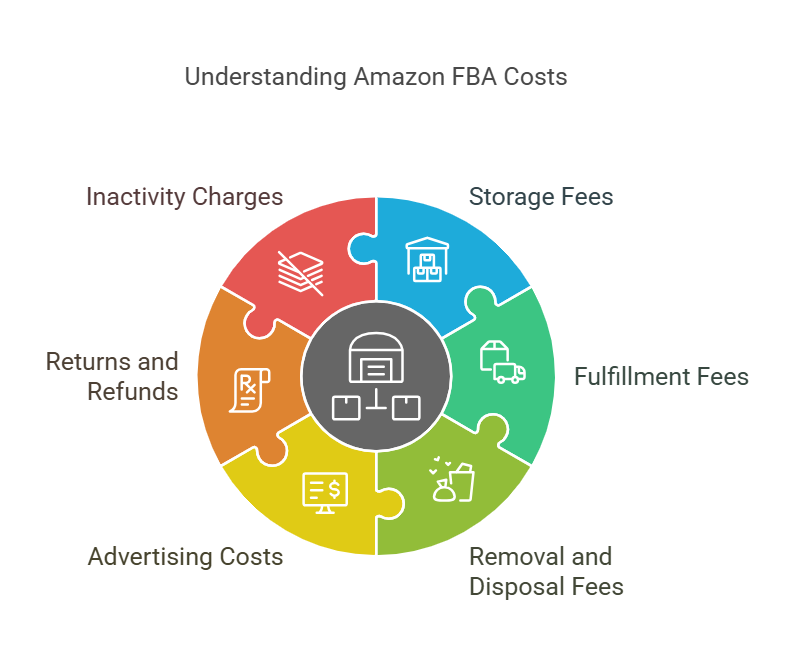Article
Hidden Costs of Amazon FBA and How to Reduce Them

Share
Hidden Costs of Amazon FBA and How to Reduce Them
Amazon’s Fulfillment by Amazon (FBA) program gives incredible convenience and makes it more convenient for vendors to store, package, and ship their product. However, few vendors know the hidden charges that can go unnoticed and take a huge portion of their profit margins. Although FBA could be a business-saving move when it comes to automating your business, there is a dire need to list these hidden charges so you would be able to manage and address them accordingly.
In this blog, we’ll uncover the hidden costs of Amazon FBA and offer practical tips on how to reduce them while still enjoying the benefits of this powerful fulfillment service.

Storage Fees (Long-Term and Monthly)
What are they?
Amazon charges monthly recurring storage fees for keeping your inventory in its fulfillment centers. The charges are based on the cubic feet of your items. The cost of monthly storage tends to be more during the high season of holidays (October–December) as Amazon warehouses are filled to capacity.
In addition to monthly storage fees, there are long-term storage fees. These fees are incurred when your products have been stored in Amazon warehouses for 365 days or more and have not sold yet. Long-term storage fees can be substantial, and that’s why maintaining your inventory levels and turnover is essential.
How to reduce them
Monitor Inventory Turnover: Monitor your inventory and sales rhythm on a regular basis to avoid overstocking slow-sellers. You can use Amazon tools, such as the Manage Inventory and Inventory Health Report, to help you make data-driven decisions.
Leverage Amazon’s Inventory Performance Index (IPI): Amazon uses the IPI to gauge how effectively your inventory sells. Keep a high IPI score to earn lower storage fees. A good IPI score indicates your inventory is in tip-top shape, reducing fees and improving storage space usage efficiency.
Sell Off Slow Movers: If products are not selling, promote, discount, or bundle them out to get rid of excess inventory. Or simply use Amazon’s Removal Orders and return or discard the products.
Fulfillment Fees
What are they?
FBA fulfillment fees are per item that Amazon ships. They cover the picking, packing, and shipping of your products. Fulfillment fees depend on the size and weight of the product. The larger and heavier the product, the more expensive the fees, which will add up fast if your product line contains many heavy items.
How to reduce them:
Optimize Product Packaging: Reducing the weight and dimensions of your products can help cut fulfillment fees dramatically. For example, if your product has redundant packaging or can be compressed, redesign it to maximize the size. Lighter and more compact products are less expensive to fulfill.
Consolidate Shipment: Rather than sending smaller shipments for each product, consolidate your products in groups to Amazon fulfillment centers. Not only does this save transportation costs, but it can also reduce FBA fees if products are consolidated to keep the number of individual items Amazon has to ship as low as possible.
Use Multi-Channel Fulfillment (MCF): If you’re selling products on channels other than Amazon, utilize FBA’s Multi-Channel Fulfillment facility. While it costs, it simplifies your operations and gets rid of fulfillment complexity.
Removal and Disposal Fees
What are they?
If you need to have your inventory removed or dumped out of Amazon warehouses, you will be charged removal fees or disposal fees. These are charged if you would prefer for Amazon to return your un-sold merchandise to you or dump it.
How to reduce them
Better Inventory Forecasting: Another excellent method of avoiding the need to take out unsold inventory is to better forecast the requirements of inventory. By applying past sales data, trends, and seasonal patterns, you can make more accurate estimates, rendering removal requests unnecessary.
Optimize Product Listings: Ensure your product listings are properly optimized, e.g., with good-quality images, proper descriptions, and competitive prices. Properly written listings enhance the likelihood of selling products fast, thus reducing the likelihood of having to pay for removals.
Offer Discounts or Bundles: If you notice inventory piling up and disposal is inevitable, discount the products or offer bundles. This can move slow-moving inventory without having to remove it from Amazon’s warehouses.
Advertising Costs
What are they?
While Amazon FBA is technically a fulfillment service, sellers also employ Amazon Ads (PPC) to drive traffic to their listings. These aren’t included in the FBA fees, and depending on your bidding strategy, they can accumulate quickly.
How to reduce them:
Target Long-Tail Keywords: Targeting long-tail keywords (less competitive, more specific terms) in your ads can lower the cost-per-click (CPC) and improve your ROI.
Optimize Product Listings: With your product listings correctly optimized with the right keywords, images, and descriptions, they will naturally get more organic traffic, which reduces the reliance on excessive paid ads.
Leverage Amazon’s Promotions: In addition to PPC, also leverage Amazon’s Lightning Deals, Coupons, or Prime Day promotions to generate visibility and sales without relying solely on paid ads.
Monitor and Optimize Campaigns: Periodically review your ad campaigns’ performance and optimize your bid, targeting, and budget. Use Amazon’s Campaign Manager to monitor which ads are providing the highest return on investment, and pause or optimize those that don’t perform well.
Returns and Refunds
What are they?
One benefit of selling through FBA is that Amazon handles returns on your behalf, but this does not mean that the process is free. Amazon return processing charges are posted against your account when customers return merchandise. These charges vary based on the category of product and return reason.
You can also lose money when your products are returned and cannot be resold in like-new condition.
How to reduce them:
Detailed Product Descriptions: To keep returns at a minimum, make sure that your product descriptions are as specific as possible, and that your product images really represent what the customer will receive. This will discourage returns caused by customer dissatisfaction.
Give Excellent Customer Service: Being attentive to customers’ inquiries, and good return policies, can minimize returns. Happy customers are not as likely to return merchandise.
Quality Control: Have your products tested prior to sending them to Amazon to verify they are in quality condition. Poor or faulty merchandise has a better opportunity for returns, so spending money on quality control will help lower returns.
Inactivity Charges on Unused Inventory
What are they?
Amazon charges fees on unfilled inventory that does not sell within a predetermined period. You may be charged inactivity or inventory management charges on products Amazon deems surplus if you have idle inventory stored in Amazon’s fulfillment centers.
How to reduce them:
Utilize Amazon’s Inventory Management Tools: Keep an eye on your inventory levels regularly, and utilize tools such as Amazon’s Restock Inventory and Inventory Performance Dashboard to prevent holding excess inventory that could trigger inactivity fees.
Don’t Overstock: Send in only so much inventory you intend to sell within a given time. Overstocking does not only consume storage charges, but it is also likely that your inventory would go stale.

Conclusion
Although Amazon FBA may streamline logistics and grant exposure to Prime consumers, being aware of the concealed fees behind the service is key to having a successful business. By knowing the possible charges like storage, fulfillment, returns, and advertising you are able to make the necessary actions to control them efficiently.
Reducing stealth fees means being an active manager of your stock, maximizing your product listings, and smart advertising. By planning ahead and monitoring regularly, you can steer clear of the stealth fees and maximize the potential of FBA without cutting into your profits. With a balance of the convenience that Amazon FBA brings and cost-saving strategies, you’ll be on your path to success in the marketplace.